ASUS VivoBook S15 S533 review – premium quality coming at a reasonable price
 Another redesign from ASUS here. After the VivoBook S15 S532 was a huge success bringing ErgoLift and ScreenPad, now the manufacturer has decided to ditch them both for good. How successful would it be? We don’t yet know. However, it will certainly bring the manufacturing costs down, and with it – the end price, as well.
Another redesign from ASUS here. After the VivoBook S15 S532 was a huge success bringing ErgoLift and ScreenPad, now the manufacturer has decided to ditch them both for good. How successful would it be? We don’t yet know. However, it will certainly bring the manufacturing costs down, and with it – the end price, as well.
Now, don’t get us wrong, this doesn’t make the laptop less appealing, as the design now looks sleek and stylish. Let’s just hope that the build quality is on point, and for sure, we expect good performance from the hardware.
Speaking of which, this laptop comes with Comet Lake processors, which can be paired with the 25W version of the GeForce MX250. What else? Customization, IPS display, and class. Let’s check it out!
You can check the prices and configurations in our Specs System: https://laptopmedia.com/series/asus-vivobook-s15-s533/
Contents
Specs Sheet
- GPU
- NVIDIA GeForce MX350 (25W) #229 in Top GPUs NVIDIA GeForce MX350 #228 in Top GPUs NVIDIA GeForce MX250 (25W) #233 in Top GPUs Intel UHD Graphics #263 in Top GPUs Intel Iris Xe Graphics G7 (96EU) #226 in Top GPUs Intel Iris Xe Graphics G7 (80EU) #234 in Top GPUs AMD Radeon RX Vega 7 (R4000/5000, 15W) #242 in Top GPUs AMD Radeon RX Vega 6 (R4000/5000, 15W) #251 in Top GPUs
- HDD/SSD
- up to 2000GB SSD
- M.2 Slot
- 2x 2280 M.2 NVMe slot See photo
- RAM
- up to 16GB
- OS
- Windows 10 Home, Windows 11 Home, Windows 10 Pro, Windows 11 Pro
- Battery
- 50Wh, 3-cell
- Body material
- Plastic / Polycarbonate, Aluminum
- Dimensions
- 359.8 x 233.8 x 16.1 mm (14.17" x 9.20" x 0.63")
- Weight
- 1.80 kg (4 lbs)
- Ports and connectivity
- 2x USB Type-A
- 2.0
- 1x USB Type-A
- 3.2 Gen 1 (5 Gbps)
- 1x USB Type-C
- 3.2 Gen 1 (5 Gbps)
- HDMI
- Card reader
- MicroSD
- Wi-Fi
- 802.11ax
- Bluetooth
- 5.0
- Audio jack
- 3.5 mm combo
- Features
- Fingerprint reader
- optional
- Web camera
- HD
- Backlit keyboard
- Microphone
- Digital Array Microphone
- Speakers
- 2x 2W, Harman Karbon
- Optical drive
All ASUS VivoBook S15 S533 (M533) configurations
What’s in the box?
Inside the package, we found a 65Wh power adapter, some paper manuals, and the laptop, itself. Additionally, there is a cute little letter that hides some cool stickers. Apparently, ASUS is all about stickers in 2020.
Design and construction
Metal chassis and lid, and plastic bottom plate. This is a neat combination, making the device feel a lot more premium than its price suggests. Of course, a similar construction was seen on the Ideapad S540 (15), which is a direct competitor to the VivoBook S15 S533. Despite the 16.1mm profile, we observed very little twisting of the chassis, and the 1.80 kg of weight makes it extremely portable.
Next, there is the lid, which cannot be opened with a single hand, sadly. The display, itself, has very thin bezels all around, and a Web camera placed above it.
Then, we have the keyboard. As it happens, it wasn’t only the touchpad that was changed from last year. Now the keyboard has a full-sized NumberPad segment, clicky feedback, and a decent travel. Additionally, it is equipped with a backlight and a highlighted Enter key.
Speaking of the touchpad, it has a glass surface with brilliant gliding and multi-touch gesture support. Its buttons are embedded beneath the surface and are easy to click. If you look closely, you’re going to see the fingerprint reader of this device, sharing some space with the trackpad.
Ultimately, you will observe a very slight bend on the keyboard deck and above the touchpad, when you press harder. Sadly, it has a negative effect on comfort when typing.
Expectedly, the bottom panel is home to the speaker cutouts and a rather small ventilation grill. We hope that the single fan inside this machine has enough breathing space.
Ports
On the left side, you’ll find the power plug, an HDMI connector, a USB Type-A 3.1 (Gen. 1) port, a USB Type-C 3.1 (Gen. 1) port, and an audio jack. On the other side, you get two USB Type-A 2.0 ports and a MicroSD card reader.
Disassembly, upgrade options and maintenance
So, there are 10 Torx-head screws preventing you from removing the bottom panel. After you unscrew them, work your way around the panel with a plastic pry tool or a guitar pick.
Now, let’s take a look at the cooling solution. Here, we see a single but pretty fat heat pipe. It cools both the CPU and the GPU and ends up at a beefy heat sink.
Sadly, all of the memory here is soldered to the motherboard. You can get the device with either 8GB or 16GB of RAM, and there are no options for upgrades. However, things sit differently in the storage department. The VivoBook S15 has two M.2 PCIe slots.
Battery-wise there is a 50Wh unit.
Display quality
ASUS VivoBook S15 S533 comes with a Full HD IPS panel, model number LG LP156WFC-SPD1 (LGD0563). Its diagonal is 15.6″ (39.62 cm), and the resolution – 1920 х 1080p. Additionally, the screen ratio is 16:9, the pixel density – 142 ppi, their pitch – 0.18 x 0.18 mm. The screen can be considered Retina when viewed from at least 60 cm (from this distance, the average human eye can’t see the individual pixels).
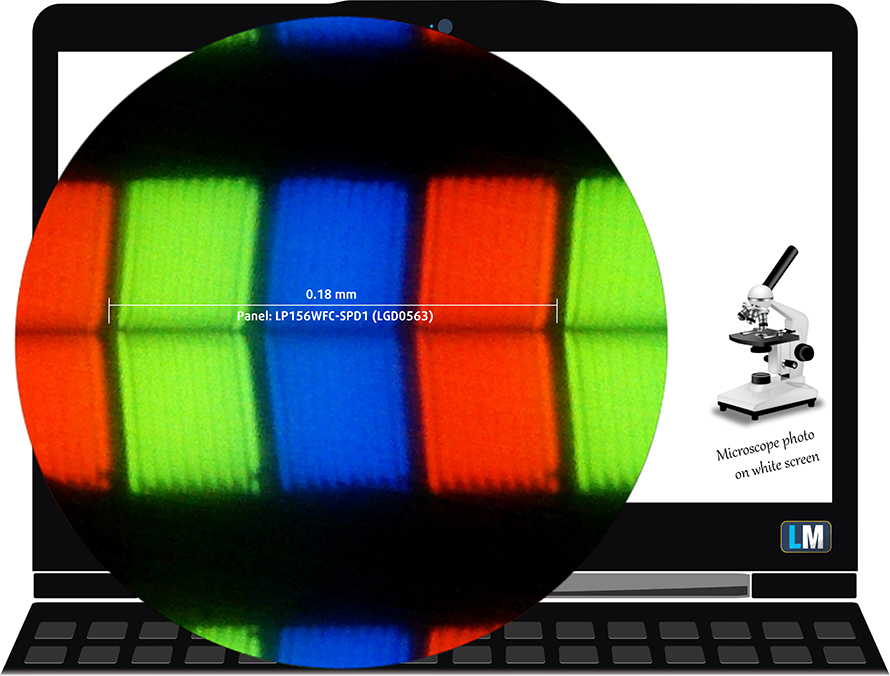
Viewing angles are good. We offer images at different angles to evaluate the quality.

The maximum measured brightness is 250 nits (cd/m2) in the middle of the screen and 240 nits (cd/m2) average across the surface with a maximum deviation of 7%. The Correlated Color Temperature on a white screen and at maximum brightness is 7300K (average) – colder than the 6500K optimum for sRGB.
In the illustration below you can see how the display performs from uniformity perspective. The illustration below shows how matters are for operational brightness levels (approximately 140 nits) – in this particular case at 76% Brightness (White level = 141 cd/m2, Black level = 0.16 cd/m2).
Values of dE2000 over 4.0 should not occur, and this parameter is one of the first you should check if you intend to use the laptop for color-sensitive work (a maximum tolerance of 2.0 ). The contrast ratio is acceptable – 860:1.
To make sure we are on the same page, we would like to give you a little introduction to the sRGB color gamut and the Adobe RGB. To start, there’s the CIE 1976 Uniform Chromaticity Diagram that represents the visible specter of colors by the human eye, giving you a better perception of the color gamut coverage and the color accuracy.
Inside the black triangle, you will see the standard color gamut (sRGB) that is being used by millions of people in HDTV and on the web. As for the Adobe RGB, this is used in professional cameras, monitors, etc for printing. Basically, colors inside the black triangle are used by everyone and this is the essential part of the color quality and color accuracy of a mainstream notebook.
Still, we’ve included other color spaces like the famous DCI-P3 standard used by movie studios, as well as the digital UHD Rec.2020 standard. Rec.2020, however, is still a thing of the future and it’s difficult for today’s displays to cover that well. We’ve also included the so-called Michael Pointer gamut, or Pointer’s gamut, which represents the colors that naturally occur around us every day.
The yellow dotted line shows ASUS VivoBook S15 S533’s color gamut coverage.
Its display is limited just to 54% of the sRGB/ITU-R BT.709 (web/HDTV standard) in CIE1976.
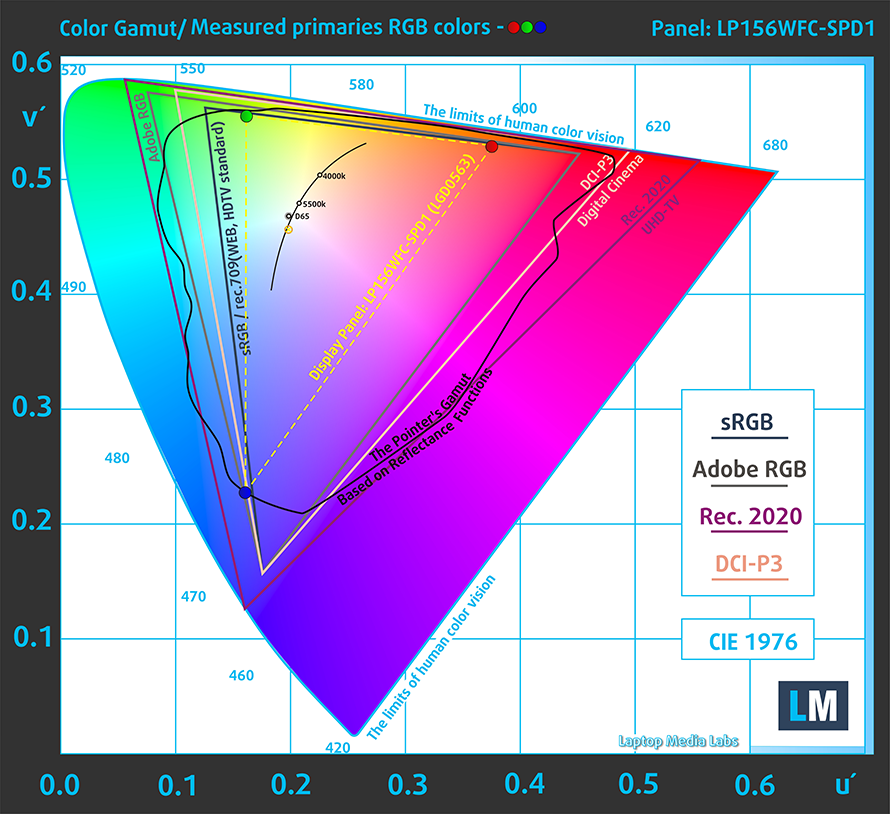
Our “Design and Gaming” profile delivers optimal color temperature (6500K) at 140 cd/m2 luminance and sRGB gamma mode.
We tested the accuracy of the display with 24 commonly used colors like light and dark human skin, blue sky, green grass, orange, etc. You can check out the results at factory condition and also, with the “Design and Gaming” profile.
Below you can compare the scores of ASUS VivoBook S15 S533 with the default settings (left), and with the “Gaming and Web design” profile (right).
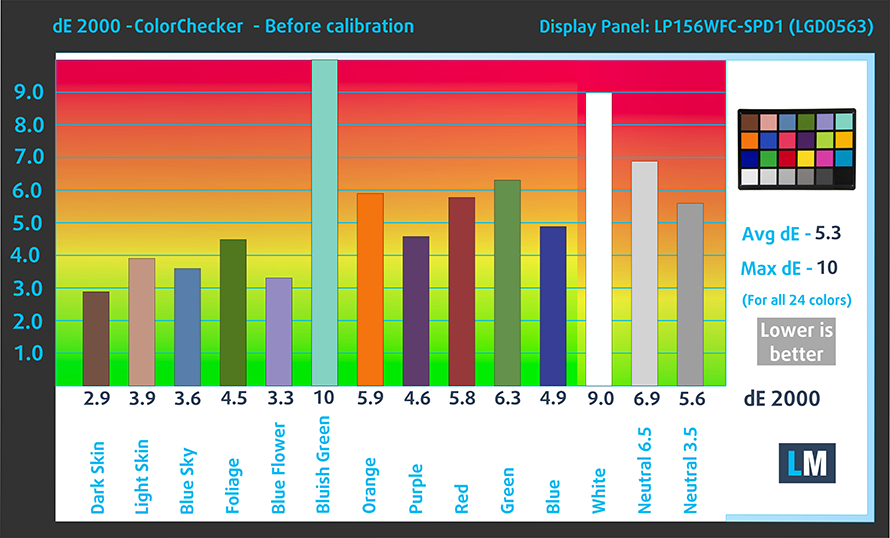
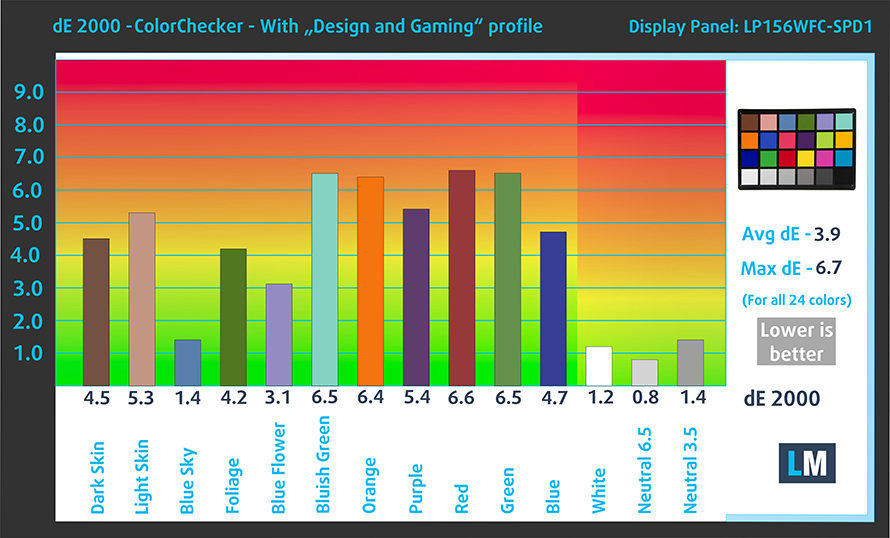
The next figure shows how well the display is able to reproduce really dark parts of an image, which is essential when watching movies or playing games in low ambient light.
The left side of the image represents the display with stock settings, while the right one is with the “Gaming and Web Design” profile activated. On the horizontal axis, you will find the grayscale and on the vertical axis – the luminance of the display. On the two graphs below you can easily check for yourself how your display handles the darkest nuances but keep in mind that this also depends on the settings of your current display, the calibration, the viewing angle, and the surrounding light conditions.
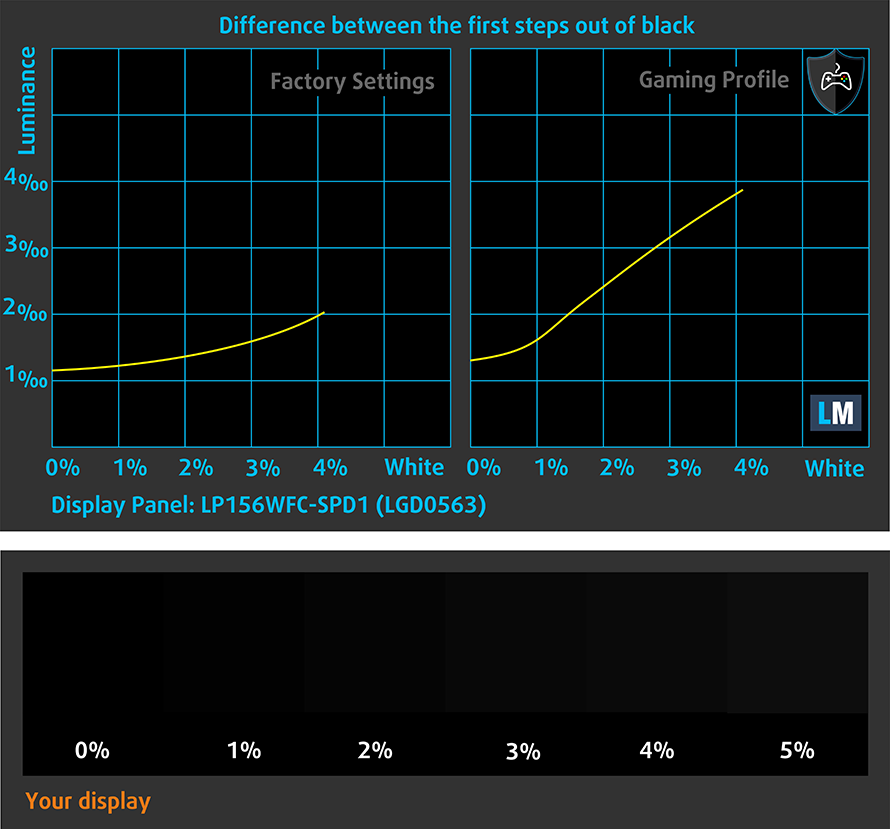
Response time (Gaming capabilities)
We test the reaction time of the pixels with the usual “black-to-white” and “white-to-black” method from 10% to 90% and vice versa.
We recorded Fall Time + Rise Time = 23 ms.
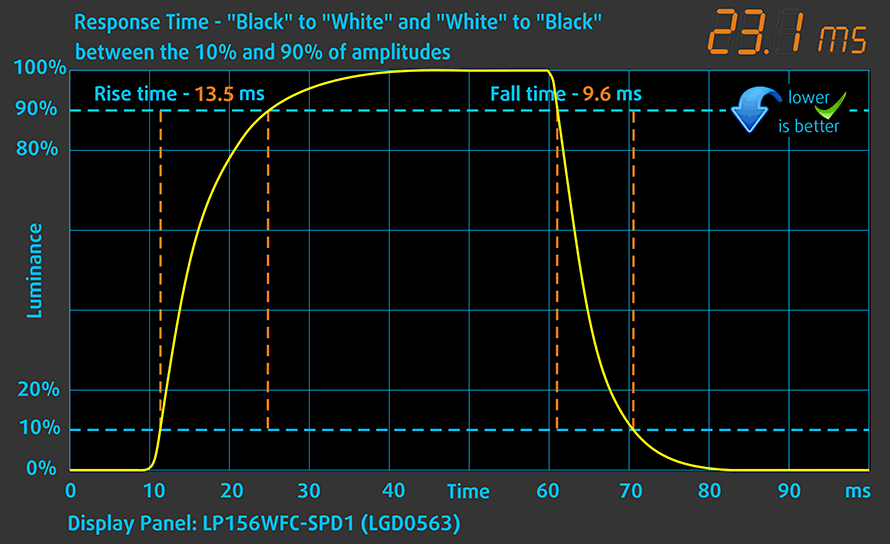
Health impact – PWM / Blue Light
PWM (Screen flickering)
Pulse-width modulation (PWM) is an easy way to control monitor brightness. When you lower the brightness, the light intensity of the backlight is not lowered, but instead turned off and on by the electronics with a frequency indistinguishable to the human eye. In these light impulses, the light/no-light time ratio varies, while brightness remains unchanged, which is harmful to your eyes. You can read more about that in our dedicated article on PWM.
ASUS VivoBook S15 S533’s backlight is not PW-modulated at any brightness level. This ensures comfort to the eyes in this aspect.
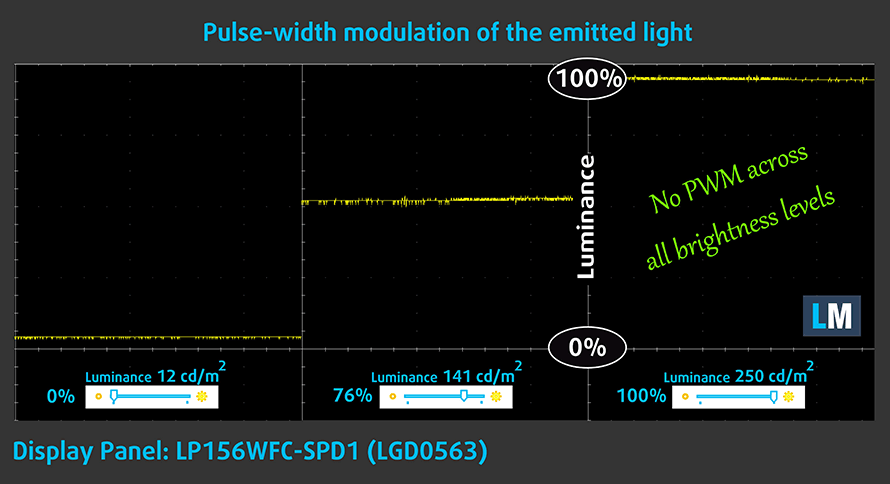
Blue light emissions
Installing our Health-Guard profile not only eliminates PWM but also reduces the harmful Blue Light emissions while keeping the colors of the screen perceptually accurate. If you’re not familiar with the Blue light, the TL;DR version is – emissions that negatively affect your eyes, skin, and your whole body. You can find more information about that in our dedicated article on Blue Light.
Conclusions
ASUS VivoBook S15 S533’s display has an IPS panel with a Full HD resolution. Its viewing angles are comfortable, the contrast ratio is high and the backlight doesn’t flicker, making it great for long periods of use. Sadly, its color reproduction suffers from only 54% of sRGB coverage.
Buy our profiles
Since our profiles are tailored for each individual display model, this article and its respective profile package are meant for ASUS VivoBook S15 S533 configurations with 15.6″ LG LP156WFC-SPD1 (LGD0563) (FHD, 1920 × 1080) IPS.
*Should you have problems with downloading the purchased file, try using a different browser to open the link you’ll receive via e-mail. If the download target is a .php file instead of an archive, change the file extension to .zip or contact us at [email protected].
Read more about the profiles HERE.
In addition to receiving efficient and health-friendly profiles, by buying LaptopMedia's products you also support the development of our labs, where we test devices in order to produce the most objective reviews possible.

Office Work
Office Work should be used mostly by users who spend most of the time looking at pieces of text, tables or just surfing. This profile aims to deliver better distinctness and clarity by keeping a flat gamma curve (2.20), native color temperature and perceptually accurate colors.

Design and Gaming
This profile is aimed at designers who work with colors professionally, and for games and movies as well. Design and Gaming takes display panels to their limits, making them as accurate as possible in the sRGB IEC61966-2-1 standard for Web and HDTV, at white point D65.

Health-Guard
Health-Guard eliminates the harmful Pulse-Width Modulation (PWM) and reduces the negative Blue Light which affects our eyes and body. Since it’s custom tailored for every panel, it manages to keep the colors perceptually accurate. Health-Guard simulates paper so the pressure on the eyes is greatly reduced.
Get all 3 profiles with 33% discount
Sound
ASUS VivoBook S15 S533’s Harman Kardon speakers produce a good quality sound with clean tones in the low, mid, and high frequencies.
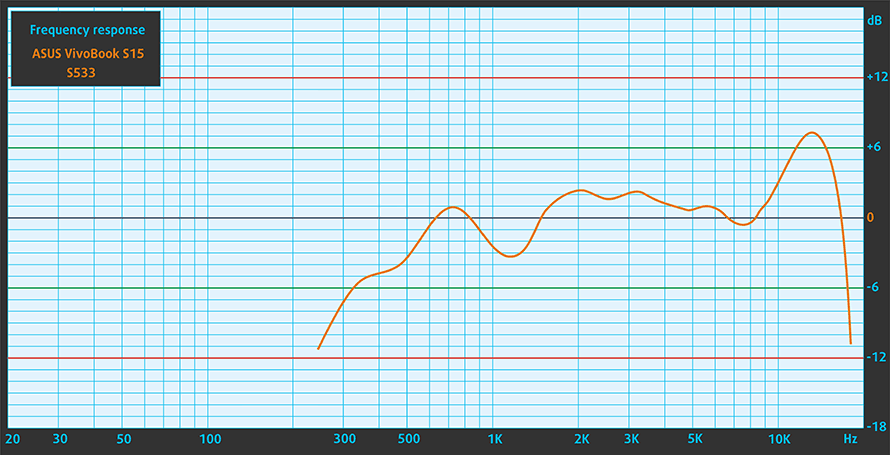
Drivers
All of the drivers and utilities for this notebook can be downloaded from here: https://www.asus.com/us/Laptops/ASUS-VivoBook-S15-S533FA/HelpDesk_Download/
Battery
Now, we conduct the battery tests with Windows Better performance setting turned on, screen brightness adjusted to 120 nits, and all other programs turned off except for the one we are testing the notebook with. We got more than 14 hours of Web browsing and around 11 hours of video playback from the 50Wh battery pack.
In order to simulate real-life conditions, we used our own script for automatic web browsing through over 70 websites.

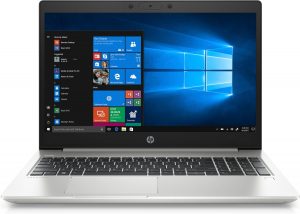
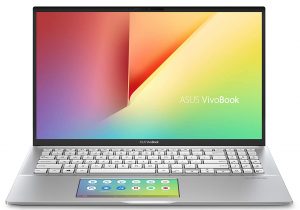

For every test like this, we use the same video in HD.




CPU options
Things here are pretty straightforwards – two options – the Core i5-10210U and the Core i7-10510U. Pretty close in performance, but the price sets them away.
Results are from the Cinebench 20 CPU test (the higher the score, the better)
Results are from our Photoshop benchmark test (the lower the score, the better)
ASUS VivoBook S15 S533 (M533) CPU variants
Here you can see an approximate comparison between the CPUs that can be found in the ASUS VivoBook S15 S533 (M533) models on the market. This way you can decide for yourself which ASUS VivoBook S15 S533 (M533) model is the best bang for your buck.
Note: The chart shows the cheapest different CPU configurations so you should check what the other specifications of these laptops are by clicking on the laptop’s name / CPU.
Results are from the Cinebench R23 CPU test (the higher the score, the better)
Results are from our Photoshop benchmark test (the lower the score, the better)
GPU options
As for the graphics, if you are happy with the integrated one, you’ll get the Intel UHD Graphics, while if you need more graphics power – the full-blown 25W version of the NVIDIA GeForce MX250 (2GB GDDR5) is at your disposal.
Results are from the 3DMark: Time Spy (Graphics) benchmark (higher the score, the better)
Results are from the 3DMark: Fire Strike (Graphics) benchmark (higher the score, the better)
Results are from the Unigine Superposition benchmark (higher the score, the better)
ASUS VivoBook S15 S533 (M533) GPU variants
Here you can see an approximate comparison between the GPUs that can be found in the ASUS VivoBook S15 S533 (M533) models on the market. This way you can decide for yourself which ASUS VivoBook S15 S533 (M533) model is the best bang for your buck.
Note: The chart shows the cheapest different GPU configurations so you should check what the other specifications of these laptops are by clicking on the laptop’s name / GPU.
Results are from the 3DMark: Time Spy (Graphics) benchmark (higher the score, the better)
Results are from the 3DMark: Fire Strike (Graphics) benchmark (higher the score, the better)
Results are from the 3DMark: Wild Life (Graphics) benchmark (higher the score, the better)
Results are from the Unigine Superposition benchmark (higher the score, the better)
Gaming tests

| CS:GO | HD 1080p, Low (Check settings) | HD 1080p, Medium (Check settings) | HD 1080p, MAX (Check settings) |
|---|---|---|---|
| NVIDIA GeForce MX250 | 92 fps | 76 fps | 65 fps |

| DOTA 2 | HD 1080p, Low (Check settings) | HD 1080p, Normal (Check settings) | HD 1080p, High (Check settings) |
|---|---|---|---|
| NVIDIA GeForce MX250 | 111 fps | 81 fps | 66 fps |
Temperatures and comfort
Max CPU load
In this test we use 100% on the CPU cores, monitoring their frequencies and chip temperature. The first column shows a computer’s reaction to a short load (2-10 seconds), the second column simulates a serious task (between 15 and 30 seconds), and the third column is a good indicator of how good the laptop is for long loads such as video rendering.
Average core frequency (base frequency + X); CPU temp.
| Intel Core i5-10210U (15W TDP) | 0:02 – 0:10 sec | 0:15 – 0:30 sec | 10:00 – 15:00 min |
|---|---|---|---|
| ASUS VivoBook S15 S533 | 2.74 GHz (B+71%) @ 62°C | 2.71 GHz (B+69%) @ 72°C | 2.61 GHz (B+63%) @ 74°C |
| HP Probook 450 G7 | 2.54 GHz (B+59%) @ 59°C | 2.12 GHz (B+33%) @ 67°C | 1.81 GHz (B+13%) @ 72°C |
| HP Probook 440 G7 | 2.68 GHz (B+68%) @ 59°C | 2.68 GHz (B+68%) @ 67°C | 2.20 GHz (B+38%) @ 72°C |
| Lenovo ThinkBook 15-IML | 3.08 GHz (B+93%) @ 73°C | 3.00 GHz (B+88%) @ 82°C | 2.55 GHz (B+59%) @ 80°C |
| Lenovo ThinkPad L13 | 3.04 GHz (B+90%) @ 97°C | 2.10 GHz (B+31%) @ 97°C | 2.12 GHz (B+33%) @ 79°C |
| Dell Inspiron 14 5491 2-in-1 | 3.45 GHz (B+116%) @ 94°C | 2.33 GHz (B+46%) @ 86°C | 2.00 GHz (B+25%) @ 74°C |
| ASUS ZenBook Duo UX481 | 3.26 GHz (B+104%) @ 94°C | 2.77 GHz (B+73%) @ 98°C | 2.06 GHz (B+29%) @ 71°C |
| Lenovo Yoga C640 (13) | 2.87 GHz (B+79%) @ 73°C | 2.89 GHz (B+81%) @ 85°C | 2.23 GHz (B+39%) @ 87°C |
| Dell Vostro 5590 | 3.50 GHz (B+119%) @ 94°C | 2.68 GHz (B+68%) @ 97°C | 2.36 GHz (B+48%) @ 79°C |
| Lenovo Yoga C740 (14) | 3.09 GHz (B+93%) @ 96°C | 2.66 GHz (B+66%) @ 97°C | 1.96 GHz (B+23%) @ 71°C |
As you can see, we got quite high frequencies in the long run here. Although it starts at just 2.74 GHz, the notebook was still able to maintain low temperatures finishing at only 74C at 2.61 GHz.
Real-life gaming
| NVIDIA GeForce MX250 | GPU frequency/ Core temp (after 2 min) | GPU frequency/ Core temp (after 30 min) |
|---|---|---|
| ASUS VivoBook S15 S533 | 1695 MHz @ 73°C | 1631 MHz @ 72°C |
| HP ProBook 450 G7 | 1458 MHz @ 74°C | 1462 MHz @ 74°C |
| HP Pavilion 15 (15-cs3000) | 1610 MHz @ 74°C | 1544 MHz @ 74°C |
| HP Pavilion 15-cs2000 | 1683 MHz @ 73°C | 1617 MHz @ 74°C |
| Acer Aspire 5 (A515-54G) | 1297 MHz @ 74°C | 1139 MHz @ 74°C |
| Lenovo Ideapad S540 (15) | 1608 MHz @ 69°C | 1404 MHz @ 59°C |
| ASUS VivoBook S15 S532 | 1708 MHz @ 77°C | 1480 MHz @ 67°C |
Looking at the graphics card temperatures, we see that the lack of lifted bottom panel has not ruined the thermals, whatsoever. In fact, the VivoBook S15 S533 works better under load than its predecessor.
Comfort during full load
And all of that, at a very low noise penalty.
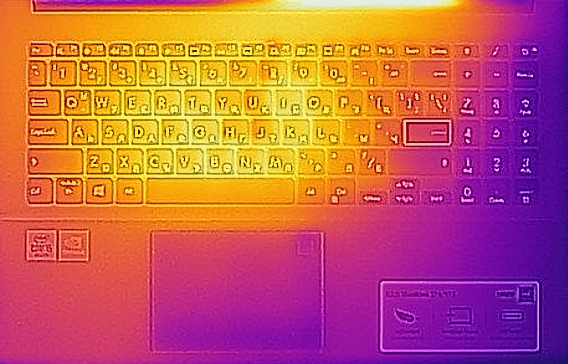
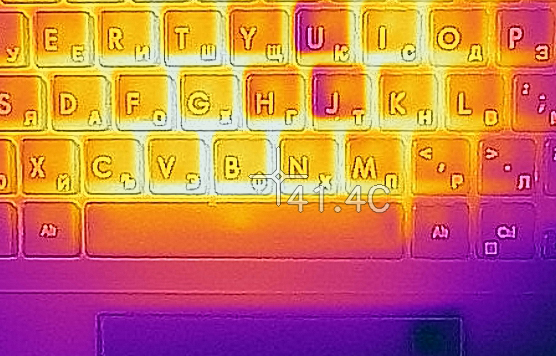
Verdict
 Yep, ASUS has somewhat downgraded the features of this notebook. And although we really enjoyed the ScreenPad on the previous model, we didn’t really miss it this year. To sum up, this laptop has a very stylish design, coming in a handful of color options, and similarly to the TUF A15 and A17, the VivoBook S15 S533 has some fancy stickers inside the box.
Yep, ASUS has somewhat downgraded the features of this notebook. And although we really enjoyed the ScreenPad on the previous model, we didn’t really miss it this year. To sum up, this laptop has a very stylish design, coming in a handful of color options, and similarly to the TUF A15 and A17, the VivoBook S15 S533 has some fancy stickers inside the box.
Effectively, this targets the younger generation and people who like to express themselves. Additionally, in terms of usability, this is a very stable device with a great performance both in CPU and in GPU-intensive tasks. Traditionally, ASUS is giving its VivoBook and ZenBook series quite a lot of headroom to perform, but interestingly, the cooling solution on this laptop was good enough, and we didn’t experience any type of overheating.
Another exceptional feature of the notebook is its battery life. We got more than 14 hours of Web browsing and around 11 hours of video playback. Clearly, you will love going away from home with this one.
ASUS VivoBook S15 S533’s display has an IPS panel with a Full HD resolution. Its viewing angles are comfortable, the contrast ratio is high and the backlight doesn’t flicker, making it great for long periods of use. Sadly, its color reproduction suffers from only 54% of sRGB coverage.
Now, on the verge of disadvantages – you won’t be able to upgrade your memory. All of it is soldered to the motherboard and you have the option to go for either 8GB or 16GB. Thankfully, there are two M.2 SSD slots and a MicroSD card reader, despite the lack of Thunderbolt connectivity. As of security, you get a pretty snappy fingerprint reader, while the wireless connection supports Wi-Fi 6 speeds.
At the end of the day, there are a lot of strong laptops priced similarly that provide pretty much the same value. Some of them include the VivoBook S15 S532 (the predecessor) and the Lenovo Ideapad S540 (15). However, the VivoBook S15 S533 is a great unit with a lot of performance, and enough juice to last yours a full day away from the plug.
Pros
- Great performance from the energy-efficient hardware
- Doesn’t use PWM for brightness adjustments
- MicroSD card slot and a fingerprint reader on board
- Two M.2 SSD slots and Wi-Fi 6 support
- Great battery life
- Comfortable viewing angles and a good contrast ratio
- Stylish metal chassis with four color options and stickers inside the box
- Good cooling setup
Cons
- Covers only 54% of sRGB (BOE NV140FHM-N49) and has mediocre color accuracy
- RAM is soldered to the motherboard
You can check the prices and configurations in our Specs System: https://laptopmedia.com/series/asus-vivobook-s15-s533/
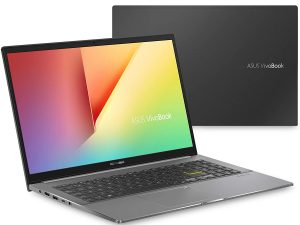

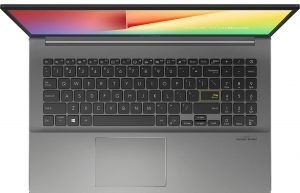
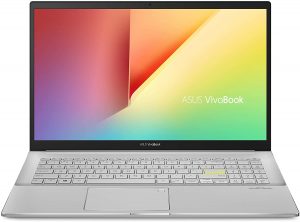
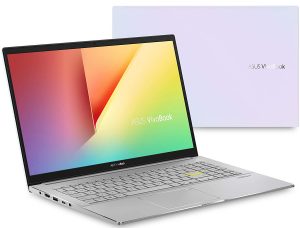
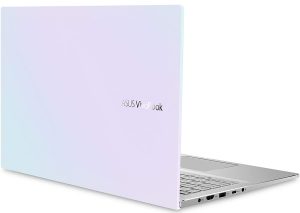
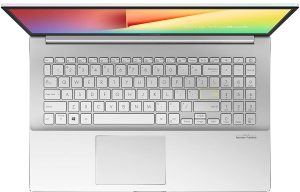
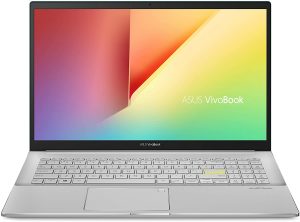


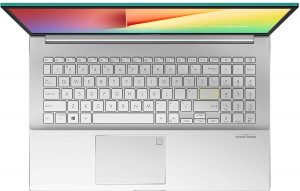
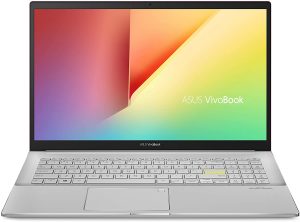
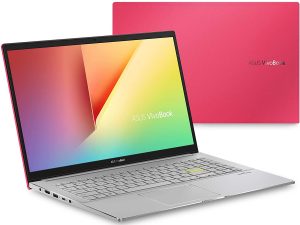

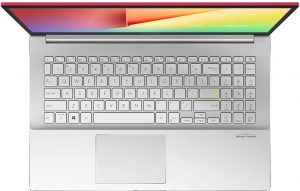
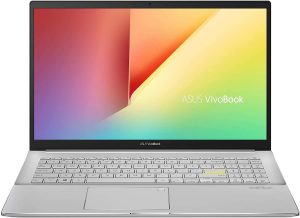
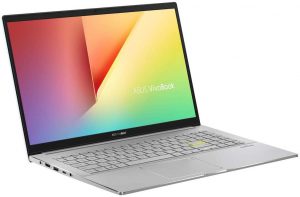
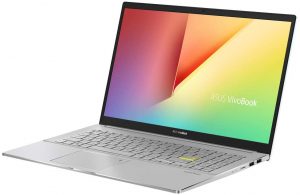

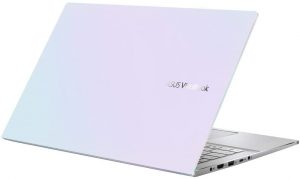

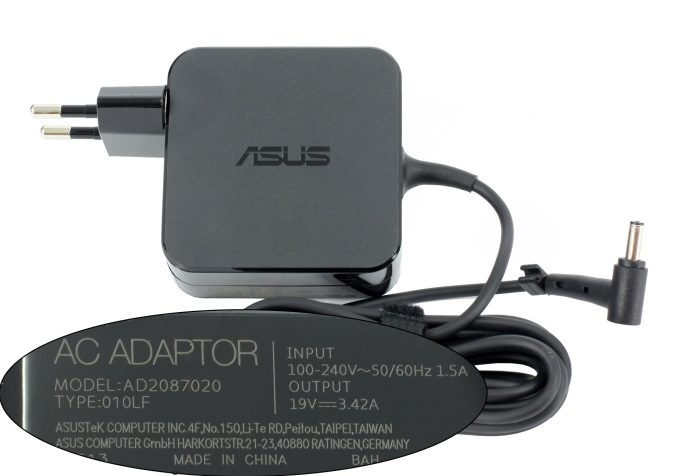
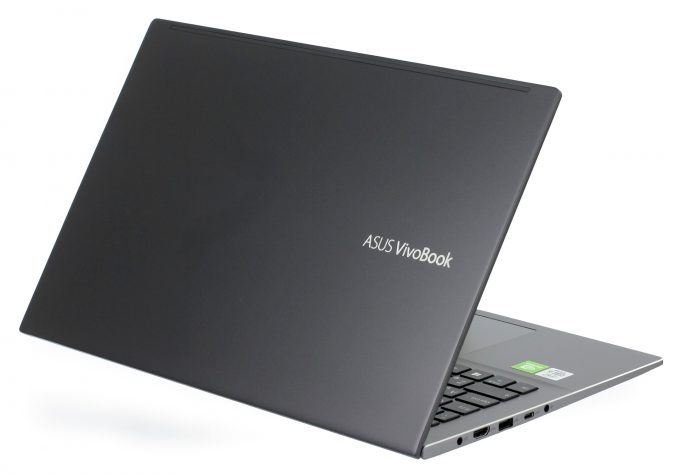
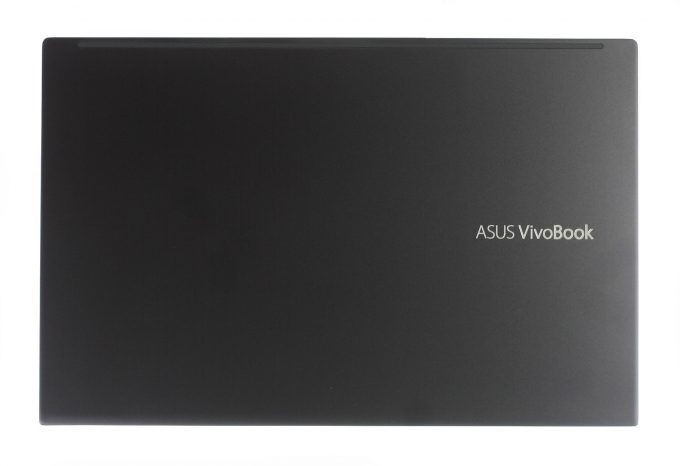
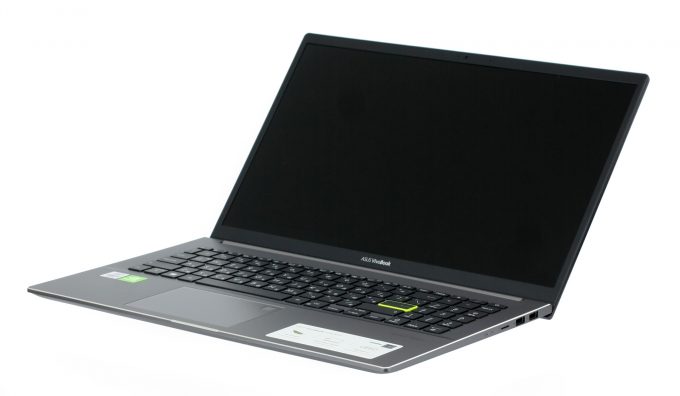
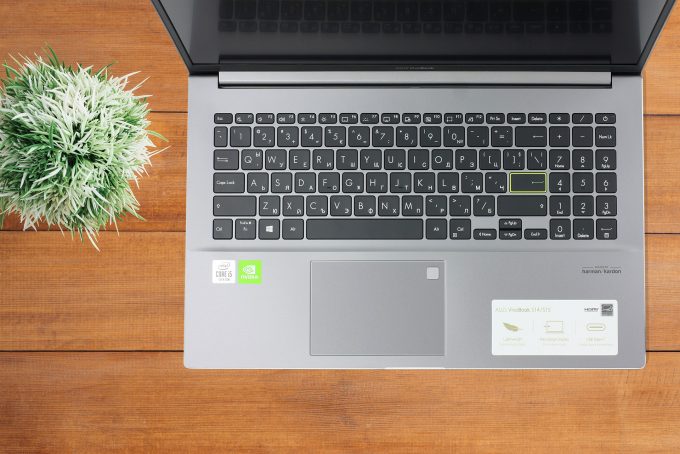




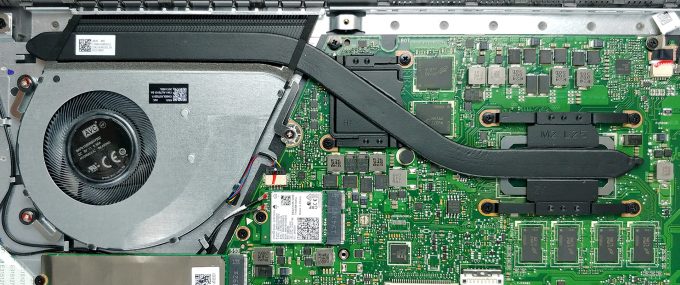
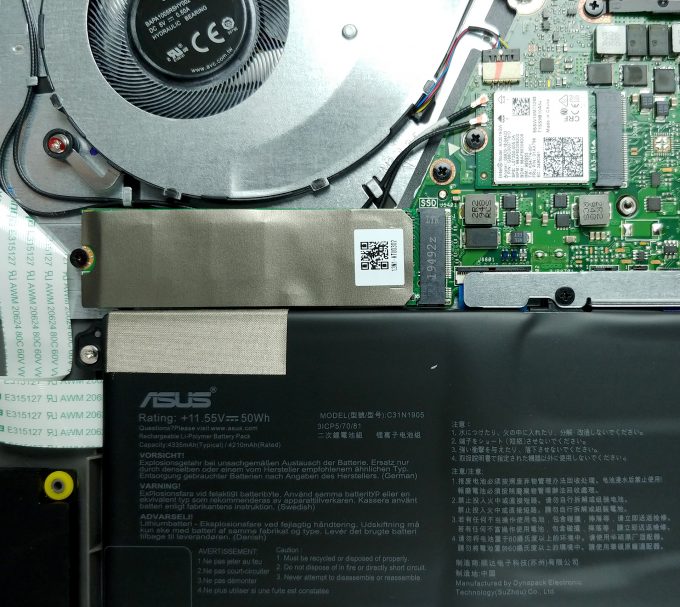
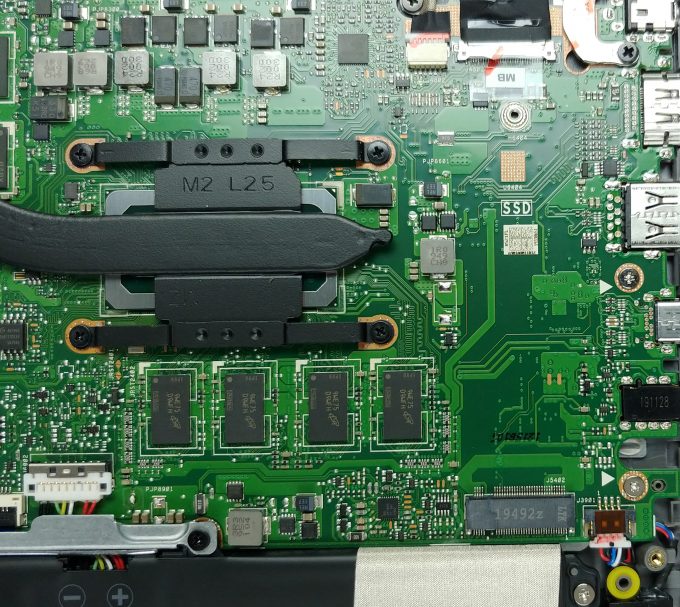

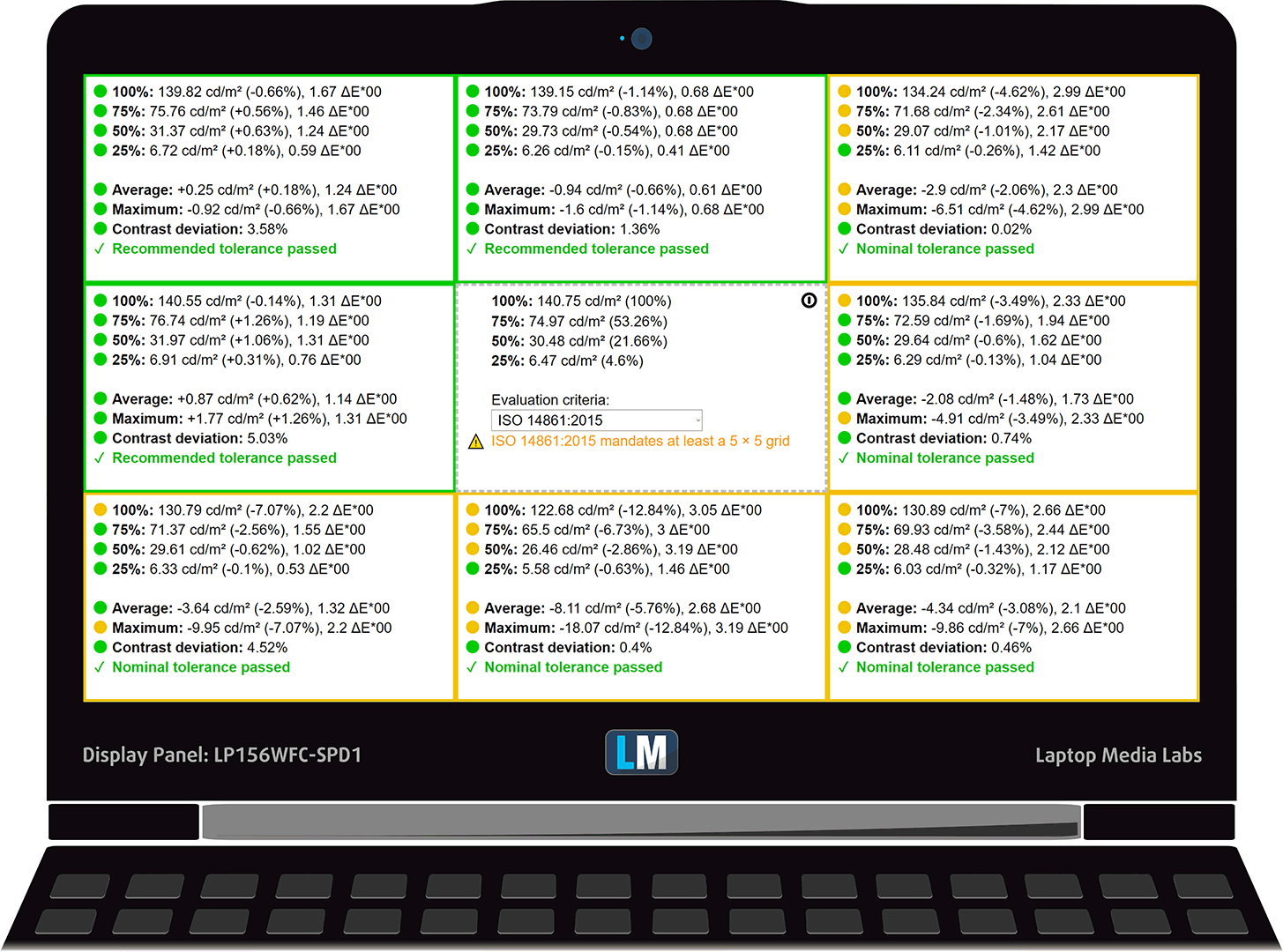

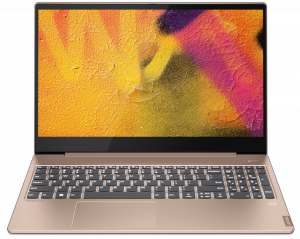
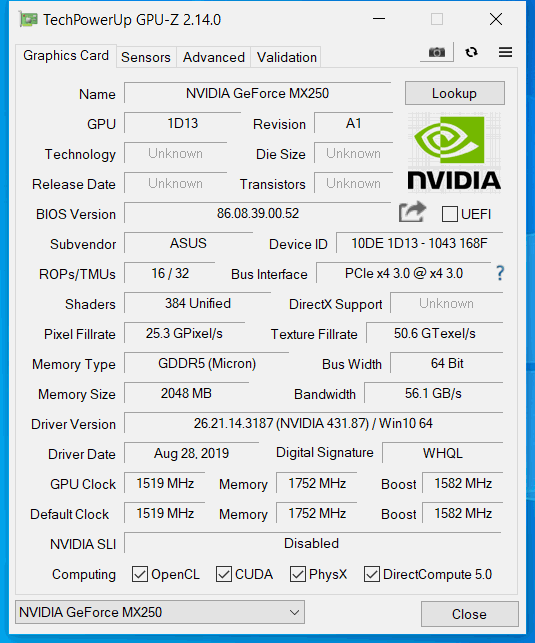








Thanks for a good review, as always! I am slightly confused at lower FPS numbers in gaming tests compared to last years S532 model. Considering the cooling seems superior to last years solution I would have expected S533 to overtake the older sibling in gaming departement, like it did in synthetic benchmarks. For the right price however it seems like a great buy, I only wish they upgraded the screen offering slightly at least.